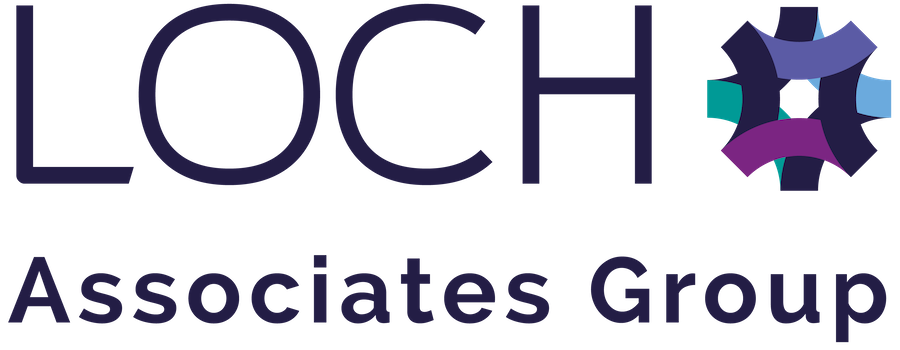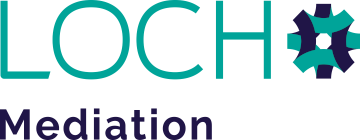Throughout history, there are many examples of machinery, technology and innovation that have dramatically changed our working world. Take, for example, the invention of the Spinning Jenny in 1764. This marvel of the Industrial Revolution transformed the textile industry by allowing a single operator to manage multiple spindles simultaneously, vastly increasing yarn production and altering the way we worked with textiles.
Of course, while the benefits were enjoyed by factory owners, the workers often found themselves competing with a machine that was far more efficient than they were, causing mass job displacement and sparking resentment as they grappled with the profound changes that automation brought to their working lives.
Just as the Spinning Jenny reshaped the fabric of society, we find ourselves at another pivotal juncture in the modern workplace. Artificial intelligence is redefining how we use technology, driven by an appetite for businesses to be more efficient and reduce time spent on simple – but time-consuming – tasks.
According to Forbes, approximately 68% of large companies, 33% of medium-sized companies, and 15% of small companies have incorporated at least one AI technology, figures that will grow as the tools become more sophisticated. But deployment on this scale can lead to a number of drawbacks or considerations, not least the impact this will have on job displacement and replacement, alongside privacy concerns and the presence of bias in data used to train AI.
These considerations have led critics and HR specialists to raise the question of employment policy. Specifically, they ask the question: should you have an AI workplace policy in place that can mitigate some of the biggest issues presented by AI?
To understand why that question is an important one and to answer it effectively, we first need to understand how AI is being deployed in the workplace.

How is AI being deployed in the workplace?
The capabilities of AI – which incorporates machine learning, natural language processing and data analytics – have been expanding rapidly throughout the course of the last five years. As a result, depending on your industry and business type, it is likely that you will have encountered AI in the workplace.
For example, recruitment teams might use AI to screen candidates based on their qualifications, set up interviews with them, and even answer any queries they might have. In a typical customer service department, that ability to respond to queries has led to the implementation of chatbots that work alongside live translation services to provide seamless international assistance. Developers might use AI to generate code, managers can enhance their decision-making based on information provided by artificial intelligence, and even healthcare professionals have begun to rely on a suite of futuristic tools to make accurate diagnoses and prescribe courses of treatments tailored to individual patient needs.
In short, artificial intelligence has found a place in almost every workplace performing functions that transcend the acceleration of simple tasks. It has, instead, become an indispensable tool, optimising complex processes, enhancing decision-making, and enabling the workforce to leverage data-driven insights to achieve greater productivity and innovation.
Advantages of AI in the Workplace
The potential of AI might be impressive – able to mimic complex human-like capabilities and even behaviours – but the main advantage of AI in the workplace is its contribution to efficiency. What might take a human hours, even days, can be completed in a matter of seconds by certain AI tools. Moreover, the accuracy and precision achieved with AI are often difficult to replicate without artificial assistance.
By processing data and executing tasks at a pace that far surpasses human capabilities, productivity is boosted, response times are reduced, and overall operational efficiency is improved. These things can all give your organisation a competitive edge which will feed into increased profits, but studies have shown that AI can also make your workplace a safer one; following a 10-week trial of computer vision technology, high street retailer Marks & Spencer reported an 80% reduction in warehouse accidents.
Disadvantages of AI in the Workplace
Despite its many benefits, AI is a double-edged sword – likened by Digital Journal to Edgar Allen Poe’s monkey paw – bringing with it several important considerations for organisations to make.
The first is a concern held by employees that artificial intelligence has the potential to take their jobs away, very similar to the anxiety felt by textile workers in the 18th century when the Spinning Jenny was invented. In fact, the UK government agrees that job replacement is a valid issue, predicting that as many as 7% of existing UK jobs could be displaced over the next five years, rising to around 18% after 10 years and nearly 30% after 20 years. Furthermore, a report published by Goldman Sachs predicts that, globally, as many as 300 million jobs could be lost.
Such forecasts understandably raise concerns over job security, lowering morale which, in turn, impacts productivity. Your company culture can also be harmed by the act of replacing members of staff with AI; when BT announced its intention to cut 55,000 jobs – many of which would be replaced by AI – it was fiercely criticised as a move that put cost-cutting above the wellbeing of its employees.
The second major drawback of implementing AI in the workplace is an algorithm bias. AI is only as fair as the data it is trained on, so if a bias exists in the data, it could affect the way that it operates. Taking recruitment as an example, if the AI tool is fed data influenced by an unconscious bias against a protected characteristic, you could be inadvertently making your hiring process an unfair one, potentially leading to legal challenges and reputational damage.
Finally, there is a privacy concern to take into consideration. AI systems rely on vast data sources, including customer and employee records, raising questions about whether data is collected without proper consent or from questionable sources. Equally significant is data usage, where personal information can be employed without consent, resulting in concerns about surveillance and a lack of control over personal data.
It is, therefore, important to consider an AI workplace policy, addressing these three concerns and many more.
Why is an AI workplace policy important?
The presence of an AI workplace policy ensures that, primarily, your business is operating in a manner that is ethically responsible and legally compliant. Its purpose is to safeguard against potential violations of privacy, acts of discrimination, and any biases that could be introduced into your systems.
More than simply protecting your organisation and its image, however, the document is also a demonstration of transparency and accountability, recognising that powerful AI tools are available, but must be used only in an appropriate way. In terms of accountability, it is necessary to define responsibilities relating to AI activities, ensuring that decision-makers, data handlers, and AI users understand their obligation to promote ethical AI use.
What is included in an AI workplace policy?
An effective AI workplace policy should – like most policies – outline its scope and purpose. You might, for example, define its purpose as providing a framework for the ethical use of AI at your organisation, whereas your scope means that these guidelines could apply to all AI-related activities, projects, and initiatives conducted within or on behalf of your organisation. The policy should specify the roles and responsibilities of employees, contractors, vendors, and third parties involved in AI implementation to ensure that everyone is aware of the impacts it can have.
Your policy might then address some of the key concerns that people have with AI. A privacy section, for example, might detail how data is collected, processed, used and protected by AI systems, ensuring compliance with data protection laws and ethical data practices, whereas strategies for reducing biases could be detailed, highlighting areas where this is most applicable – such as in recruitment and performance evaluations.
These inclusions, so far, relate to preventative measures taken to avoid issues relating to AI, but it’s also important for your policy to detail who is accountable when actions are taken using the advanced tools that are detrimental to the business or the community in which you operate. It would be a good use of your time to construct a process by which responsibility is assessed and determined, followed by what consequences could take place as a result. For example, if an employee, while using AI, unintentionally mismanages customer data resulting in a data breach, they should be held accountable. Likewise, someone working in a financial forecasting team should be equipped with the tools and training to make a balanced decision based on AI assistance – failure to do so, such as acting irrationally, should have clearly defined consequences.
Having mentioned tools and training, your policy might also outline the provisions of these two things and how they relate to specific roles within the company. Your customer service team might, for example, engage in online learning to adapt to the use of a chatbot, whereas the previously mentioned financial analyst might be given material that helps to assess the information they are given before acting.
AI is evolving. It’s doing so very quickly. Therefore, you should consider including a section at the end of your AI workplace policy that details the regularity with which you will aim to review and – where necessary – amend the document. Doing so helps to keep up with changes to AI tools themselves as well as relevant legislation and how these things relate to industry standards.
With all of these things in place, made easily accessible to your employees, you can ensure that your adoption of AI can be an advantageous one.
For many businesses, an AI workplace policy is no longer a matter of choice; it is a necessity. In a world where artificial intelligence is rapidly redefining the way we work, integrating AI into your organisation without a well-defined policy is akin to sailing without a compass. It not only safeguards your ethical and legal standing but also ensures a responsible and accountable approach to AI implementation, helping you to reap the rewards of artificial intelligence while mitigating the risks.








